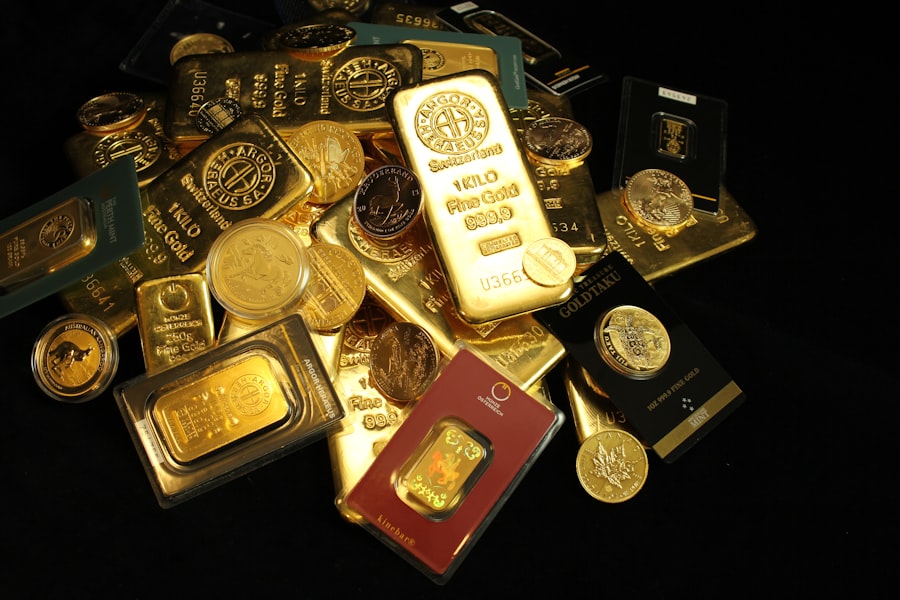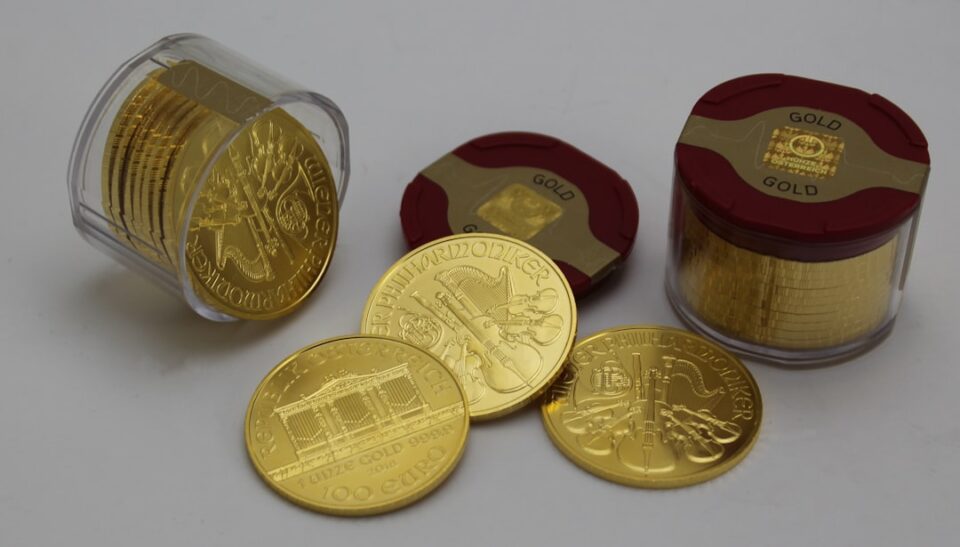Economic uncertainty is a pervasive phenomenon that can significantly impact both individual investors and broader financial markets. It often arises from a confluence of factors, including geopolitical tensions, fluctuating interest rates, inflationary pressures, and unexpected global events such as pandemics or natural disasters. This uncertainty can lead to volatility in stock markets, affecting investor confidence and prompting a reevaluation of investment strategies.
As economic indicators become increasingly unpredictable, individuals and institutions alike find themselves grappling with the implications of these fluctuations on their financial well-being. The fear of recession, job losses, and declining asset values can create a climate of anxiety, compelling investors to seek refuge in more stable investment options. In this context, understanding the nuances of economic uncertainty becomes crucial for making informed investment decisions.
Investors must not only analyze current market conditions but also anticipate potential future scenarios that could affect their portfolios. This requires a keen awareness of macroeconomic trends, as well as an understanding of how various asset classes respond to changing economic landscapes. For instance, during periods of economic downturn, consumer spending typically contracts, leading to lower corporate earnings and, consequently, declining stock prices.
Conversely, certain sectors may thrive in such environments, presenting opportunities for savvy investors. Ultimately, navigating economic uncertainty demands a proactive approach, where investors continuously assess risks and adjust their strategies to safeguard their financial interests.
Key Takeaways
- Economic uncertainty is a common occurrence and can be caused by various factors such as political instability, inflation, and global events.
- Gold is often considered a safe haven during times of economic uncertainty due to its intrinsic value and limited supply.
- Historical data shows that gold has performed well during economic downturns, making it an attractive investment during uncertain times.
- Factors such as supply and demand, inflation, and currency movements can influence the price of gold in the market.
- Diversifying your investment portfolio with gold can help mitigate risk and provide a hedge against economic uncertainty.
- When investing in gold, it’s important to consider factors such as storage costs, liquidity, and potential price volatility.
- Seeking professional advice from financial advisors and gold experts can help you make informed decisions when investing in gold.
The Role of Gold as a Safe Haven
Gold as a Safe Haven Asset
Gold has long been regarded as a safe haven asset, particularly during times of economic turmoil. Its intrinsic value and historical significance make it a preferred choice for investors seeking to preserve wealth amidst uncertainty. Unlike fiat currencies, which can be subject to inflationary pressures and government policies, gold maintains its value over time.
Gold’s Appeal During Economic Instability
This characteristic is particularly appealing during periods of economic instability when confidence in traditional financial systems may wane. Investors often flock to gold as a hedge against inflation and currency devaluation, viewing it as a reliable store of value that can withstand the test of time. Moreover, gold’s unique properties contribute to its status as a safe haven.
Gold’s Unique Properties and Performance
It is not only scarce but also universally accepted across cultures and economies, making it a liquid asset that can be easily bought or sold. During crises, when stock markets may plummet and bonds may yield little return, gold often shines as a beacon of stability. Its performance tends to be inversely correlated with that of equities; when stock prices fall, gold prices often rise as investors seek refuge from market volatility.
Gold’s Importance in an Investment Portfolio
This inverse relationship underscores the importance of gold in an investment portfolio, particularly for those looking to mitigate risk during uncertain economic times.
Historical Performance of Gold in Times of Economic Uncertainty

The historical performance of gold during periods of economic uncertainty provides valuable insights into its role as a protective asset. For instance, during the 2008 financial crisis, gold prices surged as investors fled from equities and sought safety in precious metals. The global economic downturn led to widespread panic, resulting in significant declines in stock markets worldwide.
In stark contrast, gold experienced a remarkable rally, with prices reaching all-time highs as demand for the metal soared. This trend was driven by fears of inflation and currency devaluation, prompting many to view gold as a reliable hedge against the deteriorating economic landscape. Similarly, the COVID-19 pandemic in 2020 triggered another wave of uncertainty that propelled gold prices to new heights.
As governments implemented lockdowns and stimulus measures to mitigate the economic fallout, concerns about inflation and currency stability resurfaced. Investors turned to gold not only for its historical role as a safe haven but also for its potential to preserve purchasing power in an environment characterized by unprecedented monetary expansion. The price of gold reached over $2,000 per ounce during this period, illustrating its resilience and appeal during times of crisis.
These historical examples underscore the enduring nature of gold as a protective asset in the face of economic turmoil.
Factors Influencing the Price of Gold
| Factors | Influence on Gold Price |
|---|---|
| Supply and Demand | High demand and low supply can increase the price |
| Inflation | Gold is often seen as a hedge against inflation, so its price may rise during inflationary periods |
| Interest Rates | Higher interest rates can lead to lower gold prices, as it increases the opportunity cost of holding gold |
| Geopolitical Events | Uncertainty and instability in global politics can drive investors to seek the safety of gold, increasing its price |
| Currency Fluctuations | Gold is often used as a hedge against currency fluctuations, so its price may rise when currencies are volatile |
Several factors influence the price of gold, making it essential for investors to understand the dynamics at play in the precious metals market. One of the primary drivers is the relationship between supply and demand. Gold mining production levels can fluctuate due to various factors such as geopolitical instability in key mining regions or changes in mining regulations.
Additionally, demand for gold can be influenced by cultural factors; for instance, countries like India and China have strong traditions of gold jewelry consumption, which can significantly impact global demand levels. Another critical factor affecting gold prices is macroeconomic indicators such as interest rates and inflation rates. Generally speaking, when interest rates are low or negative, the opportunity cost of holding non-yielding assets like gold diminishes, making it more attractive to investors.
Conversely, rising interest rates can lead to a decline in gold prices as investors shift their focus toward interest-bearing assets. Inflation also plays a pivotal role; when inflation rises, the purchasing power of fiat currencies declines, prompting investors to seek refuge in gold as a hedge against eroding value. Understanding these factors is crucial for anyone looking to invest in gold or incorporate it into their broader investment strategy.
Diversifying Your Portfolio with Gold
Incorporating gold into an investment portfolio can serve as an effective strategy for diversification. By adding gold to a mix of assets such as stocks and bonds, investors can reduce overall portfolio risk while potentially enhancing returns. Gold’s historical performance during times of economic uncertainty demonstrates its ability to act as a stabilizing force when other asset classes may falter.
This diversification is particularly important in today’s volatile market environment, where geopolitical tensions and economic fluctuations can lead to sudden shifts in asset values. Moreover, gold’s low correlation with traditional financial assets makes it an attractive option for portfolio diversification. While stocks may be subject to market sentiment and economic cycles, gold often behaves independently of these factors.
This characteristic allows investors to hedge against potential losses in other areas of their portfolios while maintaining exposure to an asset that has historically retained value over time. As such, including gold in an investment strategy not only provides a safeguard against market volatility but also enhances the overall resilience of the portfolio.
Risks and Considerations When Investing in Gold

Risks Associated with Investing in Gold
Investing in gold offers numerous benefits, but it is not without its risks and considerations. One significant risk is price volatility; although gold is often viewed as a safe haven asset, its price can experience substantial fluctuations based on market sentiment and external factors. Investors must be prepared for the possibility that gold prices may decline in response to changes in interest rates or shifts in investor behavior.
Key Considerations for Gold Investors
Unlike stocks or bonds, gold does not generate income through dividends or interest payments; thus, investors must rely solely on price appreciation for returns. This means that investors must carefully consider their investment goals and risk tolerance before investing in gold.
Methods of Investing in Gold
Investors can choose from various avenues for investing in gold, including physical gold (coins or bars), exchange-traded funds (ETFs), or mining stocks. Each option comes with its own set of risks and benefits; for instance, physical gold requires secure storage and insurance costs, while ETFs may be subject to management fees and market liquidity issues.
Mitigating Risks and Making Informed Decisions
Understanding the nuances of each investment option is essential for making informed decisions about how best to incorporate gold into an investment strategy while mitigating potential risks. By carefully considering the risks and benefits associated with each option, investors can make informed decisions that align with their investment goals and risk tolerance.
Seeking Professional Advice for Gold Investments
Given the complexities associated with investing in gold and navigating economic uncertainty, seeking professional advice can be invaluable for both novice and experienced investors alike. Financial advisors with expertise in precious metals can provide tailored guidance based on individual financial goals and risk tolerance levels. They can help investors understand the intricacies of the gold market and develop strategies that align with their overall investment objectives.
Moreover, professional advisors can assist in identifying suitable investment vehicles for gaining exposure to gold while considering factors such as liquidity needs and tax implications. They can also provide insights into market trends and forecasts that may influence future gold prices, enabling investors to make more informed decisions about timing their investments. Ultimately, enlisting the help of professionals can enhance an investor’s confidence in navigating the complexities of the gold market while optimizing their investment strategy amidst economic uncertainty.
In the context of economic uncertainty, investors often turn to gold as a safe haven, as detailed in the article “Gold as a Safe Haven: Analyzing Market Demand During Economic Uncertainty.” For those looking to diversify their investment portfolio further, another insightful read is the article on emerging markets. You can explore potential investment opportunities in these volatile yet potentially rewarding regions by reading Exploring Top Emerging Markets: Where to Invest Next. This article provides a comprehensive analysis of the current trends and economic dynamics in various emerging markets, which could be crucial for investors aiming to balance their portfolios with investments beyond traditional safe havens like gold.
